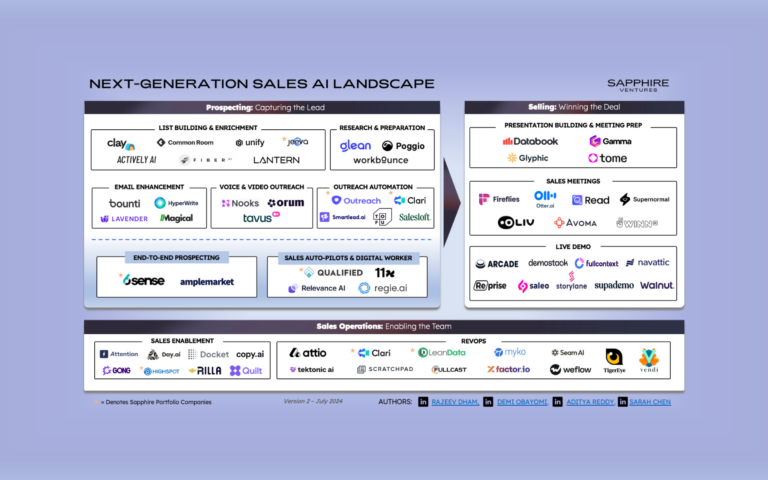With vaccinations underway in Europe, an end to the COVID-19 pandemic finally feels like it’s in sight. As a result, businesses across the continent are considering how to return to in-person operations after nearly a year at home and on Zoom. Here at Sapphire Ventures, we recognized the importance of this topic and convened several roundtables including dozens of executives from companies such as Wacker, Bentley, Deutsche Telekom, Roche and others to understand what their version of the future of work will look like.
Will people want to come back to the office? How often and how long will they be willing to commute? Has working from home led to less balance and more productivity, but less innovation? And what solutions will stay in the rotation for success in the workplace? We asked these and more, and distilled the results below. Long story short, where and how people work will remain different for the time being, with employers indexing on larger organizational changes in order to adapt to their employees’ new working preferences.
5-Day Commutes are Long Gone
We learned from executives that when the pandemic hit, they were surprisingly well-suited to the work-from-home from the IT stack perspective. That’s not to say everyone flourished immediately, as there were changes and adaptations needed. But most executives felt their company tools simply became more ingrained in worker daily lives. Zoom, Teams and Hangouts were the most popular platforms, and tools like monday.com (Sapphire portfolio company), Jira, Google Docs and Office 365 let their teams work asynchronously.
As offices reopen, the bigger issue executives and their teams face is what workplaces will look like. The individual-desk, open-plan office space is not yet COVID safe, and many employers would like to minimize the days where in-person work is needed. We heard often that 2 to3 days in the office were ideal for many future work schedules. With that in mind, office architectures are changing with less floor space, more collaborative areas and fewer individual work spaces. Some companies have even gone so far as to make the office entirely collaborative with no individual workspaces. Sapphire Portfolio companies Auth0 and Segment discussed their perspectives on how to make this successful last year when we were in the thick of things.
Coming out of the discussions, one thing was clear: Applications that help remote work are here to stay. With an increasingly high volume of digital native workers in companies, tools for fast, asynchronous, collaborative work will be foundational for employee productivity.
Learning Skills to be Successful
We learned that in the pandemic, work meetings and interactions were different. Suddenly, only one person on a Zoom could speak at a time and written communications were more important than before. We also learned that Zoom couldn’t replace a meeting room, and that Slack wasn’t the same as having a quick discussion at the coffee machine.
In order to maximize the efficiency of communication amongst in-person and remote individuals in the future, executives at our roundtable said that they were focused on employee skills and learning applications, such as Degreed and BetterUp (both Sapphire portfolio companies). The keys to success here have been:
- Easy mobile access
- Adaptive learning structures
- An aspect of job upskilling and coaching.
These factors, in our conversations, were what workers at the companies we spoke to felt were most important to feel non-stagnant in their jobs.
In addition to business skills, personal health surfaced as a need amongst the enterprise leaders we spoke with . The mental and physical health of a remote structure cannot be taken for granted, as work-life balances tumble in the wrong direction. Solutions like Noom, Unmind (a Sapphire portfolio company) and other workplace wellness programs helped employees self-organize, stay mentally and physically fit, and avoid burnout.
Drawbacks of the Fully Remote Lifestyle
The drawbacks of navigating the pandemic and working from home have been plentiful. Everyone has been affected in various, obvious ways, and while some thrived at first in their new work-from-home life, it quickly became tedious and exhausting for many. As we imagine a world of remote work possibilities, many of the executives said that they’re not planning for the majority of their staff to be fully remote. As a region, Europe is now faced with a very curious issue as many folks repatriated to their home countries during the pandemic.
When we asked our executives to elaborate on why they wouldn’t offer full remote status to their staff, they answered with the data and insight they saw during the pandemic. Yes, productivity while working from home rose a bit, but they lost the sort of innovation they would normally see from their collaborative teams. Employees found it difficult to be on camera all day, but also had a hard time unplugging, causing massive workforce fatigue. This, coupled with the greater difficulty to bridge diversity gaps and reach D&I targets, brought many to the difficult decision to mandate some in-person work for the majority of employees.
The Opportunity Ahead for Enterprises
As enterprises begin to reopen, we’ve gathered some suggestions for CIOs, CHROs and other executives to consider: These are not exhaustive, but were repeated themes we found in our conversations.
- Lean on start-up solutions to find quick wins in new remote work endeavours
- Prioritize learning, mental wellbeing and physical health applications as a benefit to employees
- Utilize focused employee feedback solutions like Culture Amp (Sapphire portfolio company) to keep a finger on the pulse of your teams
- Bridge the gap between IT and HR when deciding on what end-user solutions are priorities
- Note the cultural and economic inequalities of your workforce and work hard to find solutions to keep both parties engaged
Final Thoughts
We knew going into these roundtables that company leaders would discuss just how different work was going to be post-pandemic. While some employers are working hard to get back to normal, we’re living and working in a new normal where some things will be forever reimagined. For example, flexibility in the workplace will be part of the new normal for the majority of knowledge workers. People are tired and overworked, but excited for the social nature of their collaborative spaces. Where there is a chance to take an innovative risk, consider that your teams have been incredibly adaptive over the past year and will continue to respond to what works and doesn’t.



